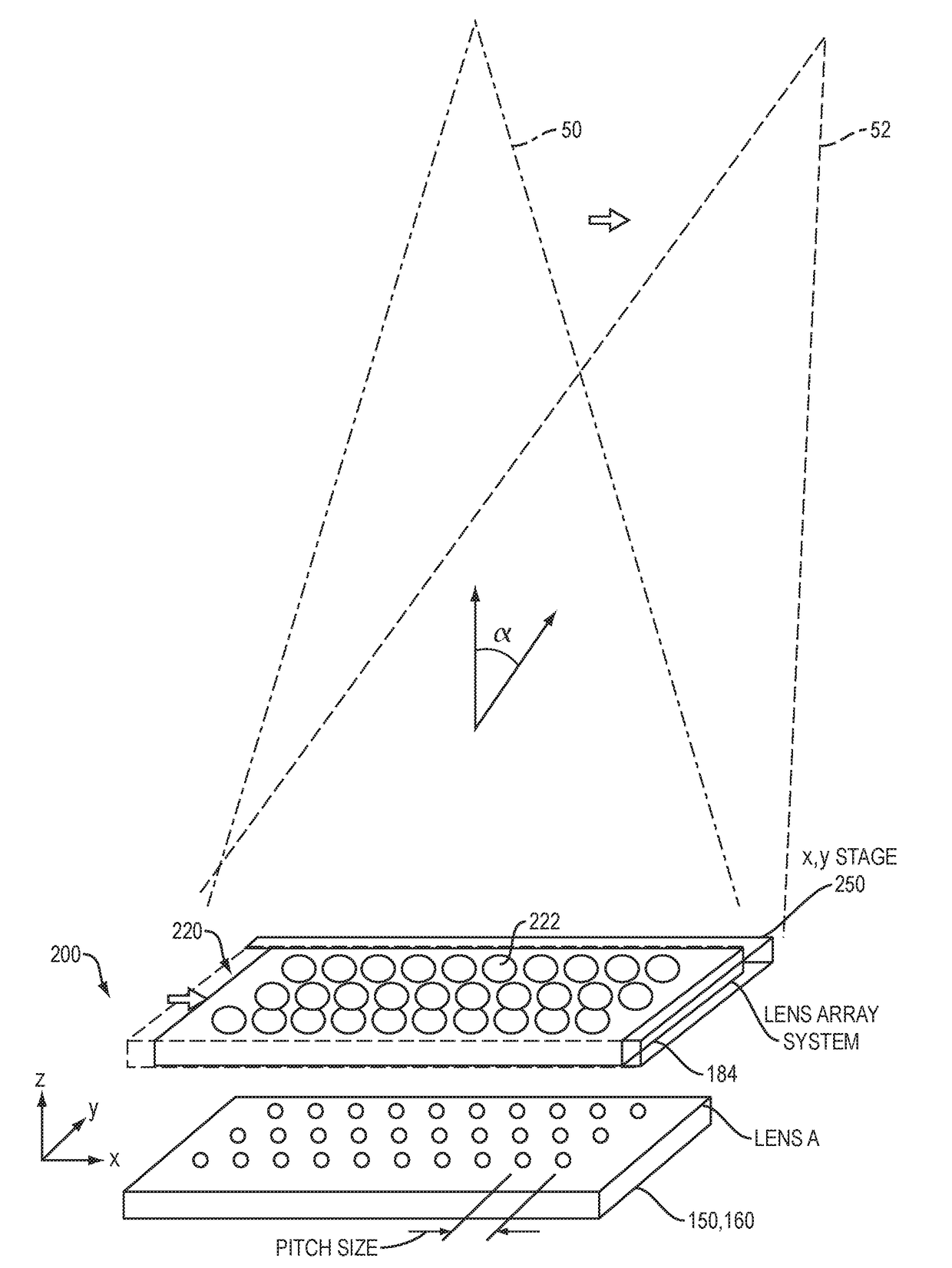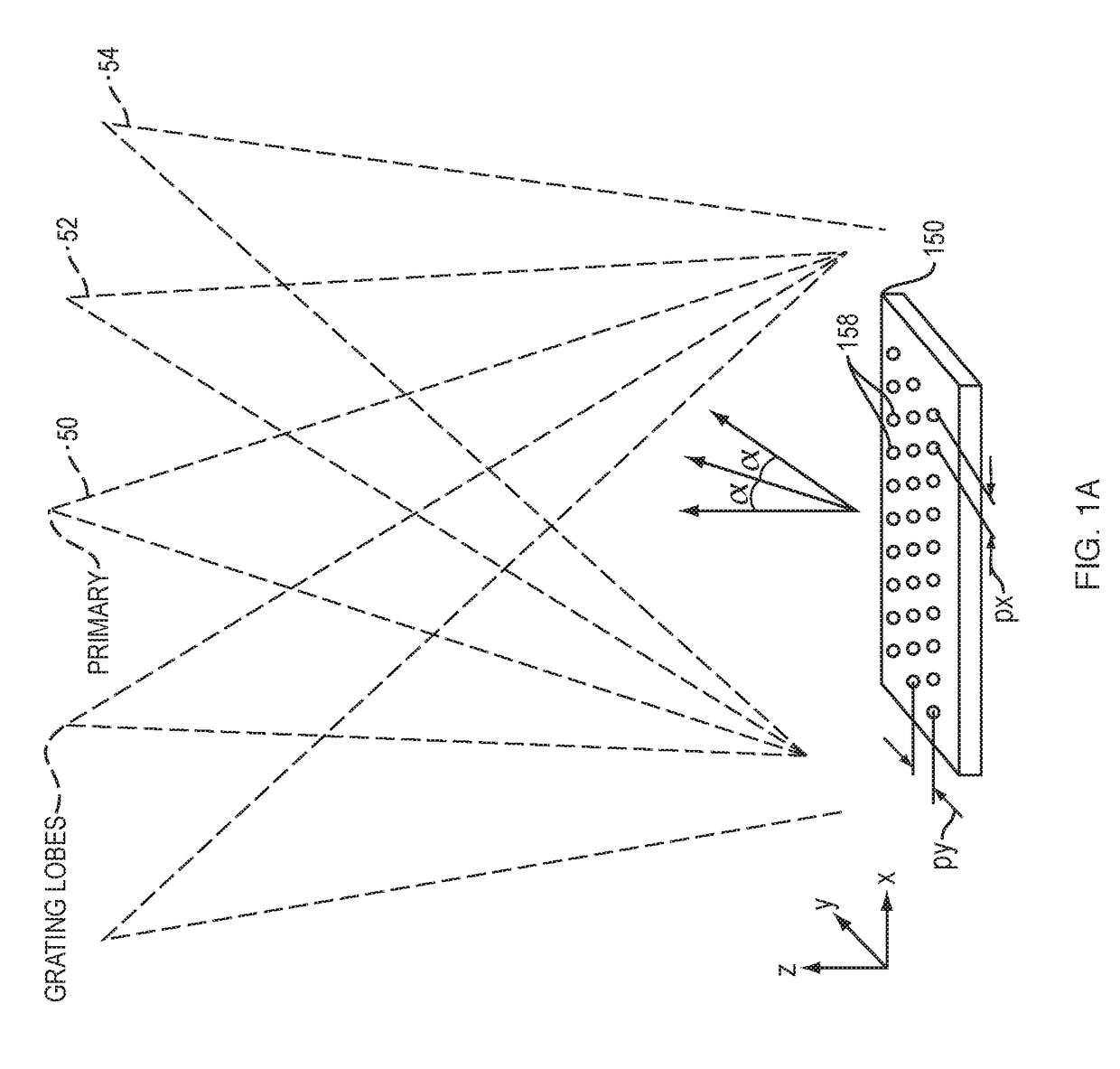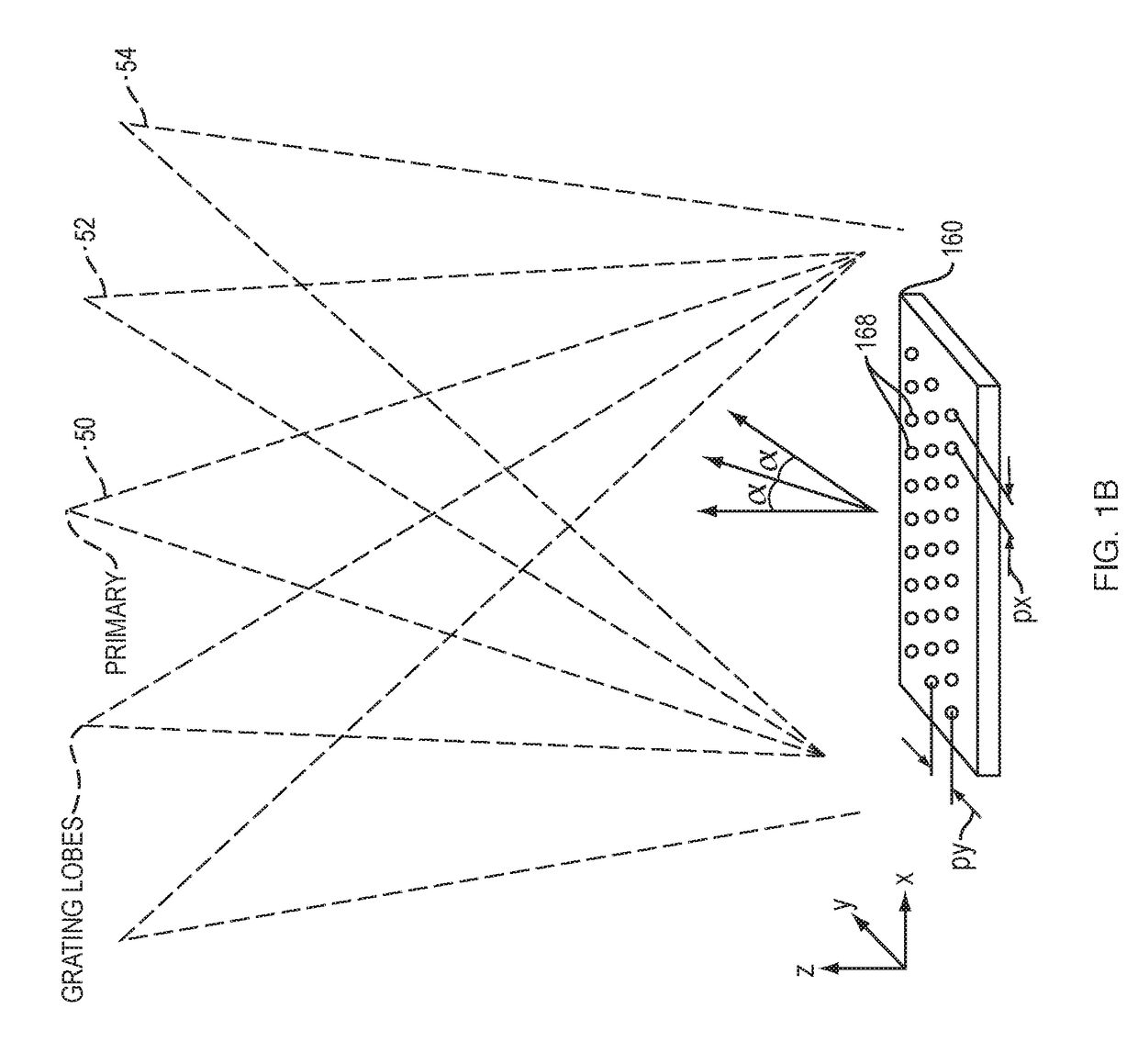Wide Angle Steering with Phase Array with Wide-Element Spacing and Lens Array
- Summary
- Abstract
- Description
- Claims
- Application Information
AI Technical Summary
Benefits of technology
Problems solved by technology
Method used
Image
Examples
first embodiment
[0051]FIG. 3 shows the coarse steering system 200 according to a This coarse steering system could be used in either the transmitter 102 or receiver 104, or both.
[0052]In this example, the coarse steering signal 184 from the steering controller 180 is provided to a x, y, stage 250 that shifts the lens array 220 in the x, y plane relative to the phased array 150, 160. As shown, this movement of the lens array 220 has the effect of shifting the beam into one of the grating lobes 50, 52. In the illustrated example, the beam is shown being shifted between the primary lobe 50 and the first order grating lobe 52.
[0053]In the illustrated enable, the phased array 150, 160 is shown as a 3 by 10 array. In typical applications, the array will have at least 8 rows and 8 columns. Good performance could be obtained with a 32 by 32 array and 100 rows by 100 columns or more are other options.
[0054]FIGS. 4A and 4B are partial views of the phased array 150, 160 and lens array 220 showing the coarse ...
third embodiment
[0060]FIG. 6 are partial views of the phased array 150, 160 and lens array system 220 showing the coarse beam steering system 220 according to a This embodiment, with its extra lens arrays, better avoids cross illumination.
[0061]Here, a series of lens arrays 230, 240, 236 are used to refocus and coarsely steer.
[0062]Starting with the example of a transmitter, the lenses 232 of the first lens array 230 focus the light from the transmission elements 158 to a set of spots, incident on the lens 242 of the second array 240. The second array 240 diverts the path of the light. A third lens array 236 collimates the light.
[0063]The x, y stage 250 moves the second lens array 240 and the third lens array 236 in unison to steer the beam. The first lens array 230 is stationary relative to the phased array 150.
[0064]In the example of a receiver, the third lens array 236 receives the incoming light. Its lenses 238 focus the light to spots in the lenses 240 of the second lens array 242. The first ...
PUM
 Login to View More
Login to View More Abstract
Description
Claims
Application Information
 Login to View More
Login to View More - R&D
- Intellectual Property
- Life Sciences
- Materials
- Tech Scout
- Unparalleled Data Quality
- Higher Quality Content
- 60% Fewer Hallucinations
Browse by: Latest US Patents, China's latest patents, Technical Efficacy Thesaurus, Application Domain, Technology Topic, Popular Technical Reports.
© 2025 PatSnap. All rights reserved.Legal|Privacy policy|Modern Slavery Act Transparency Statement|Sitemap|About US| Contact US: help@patsnap.com



